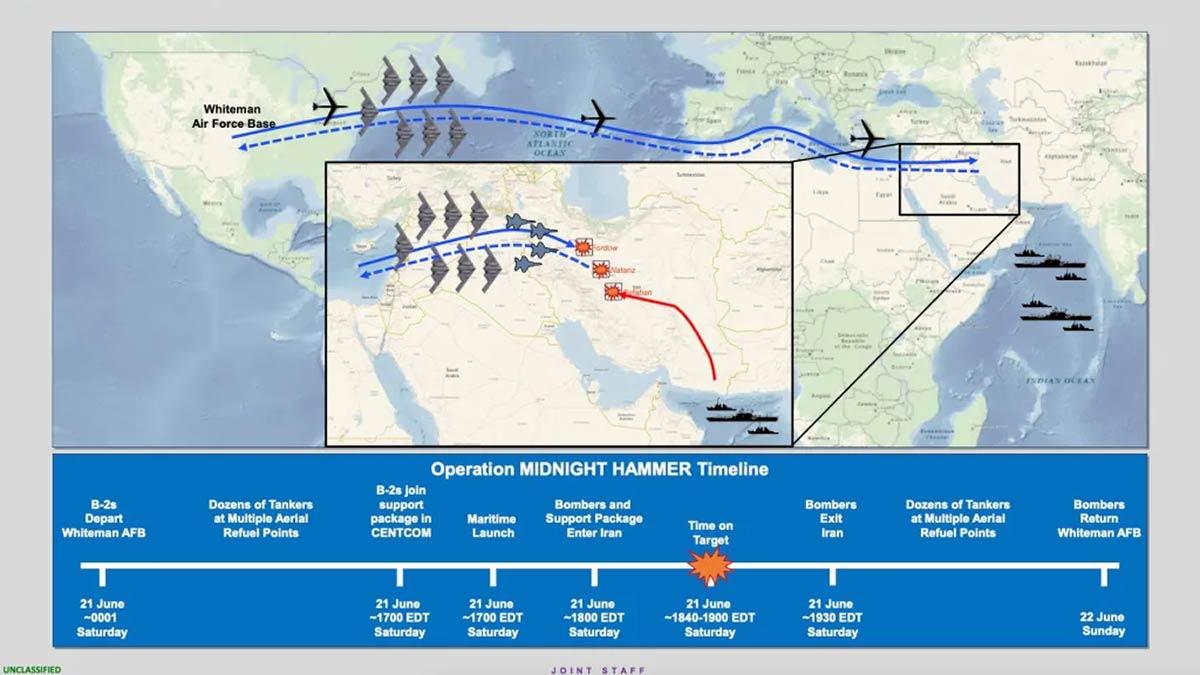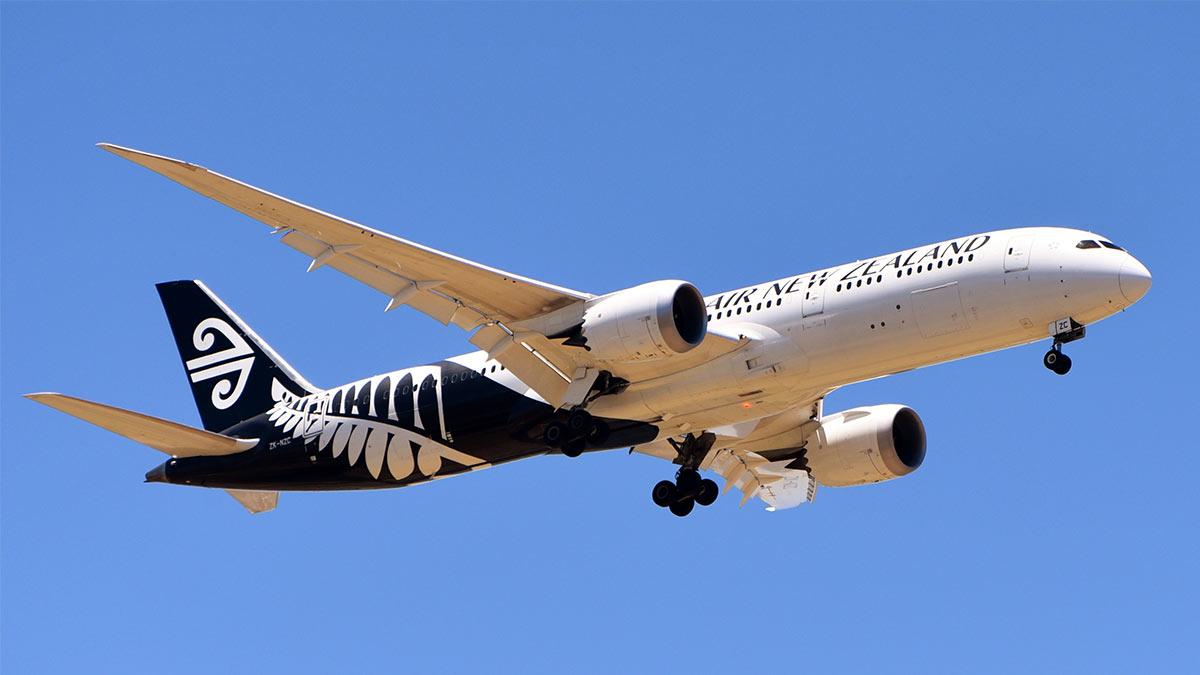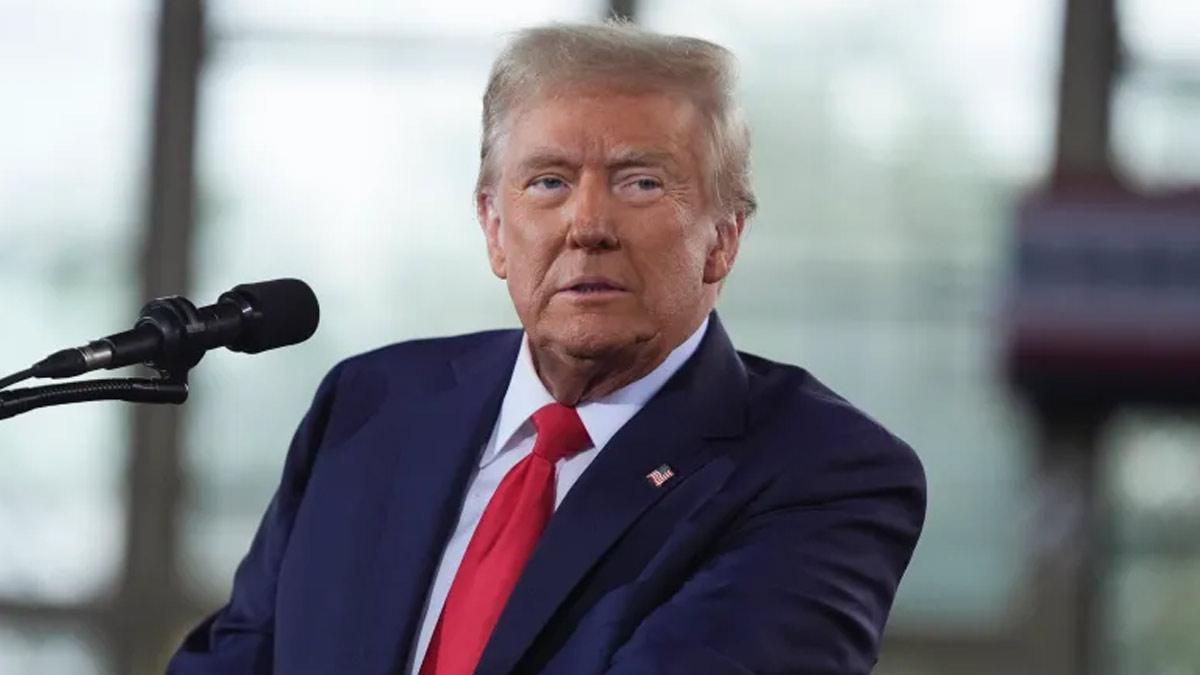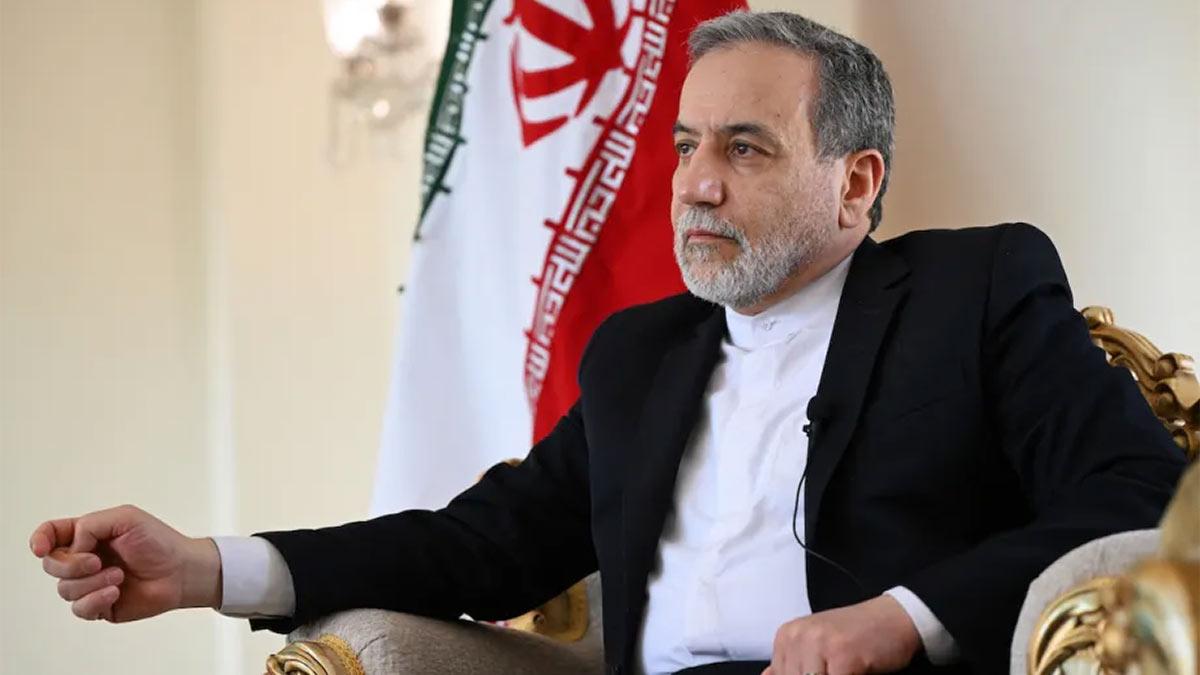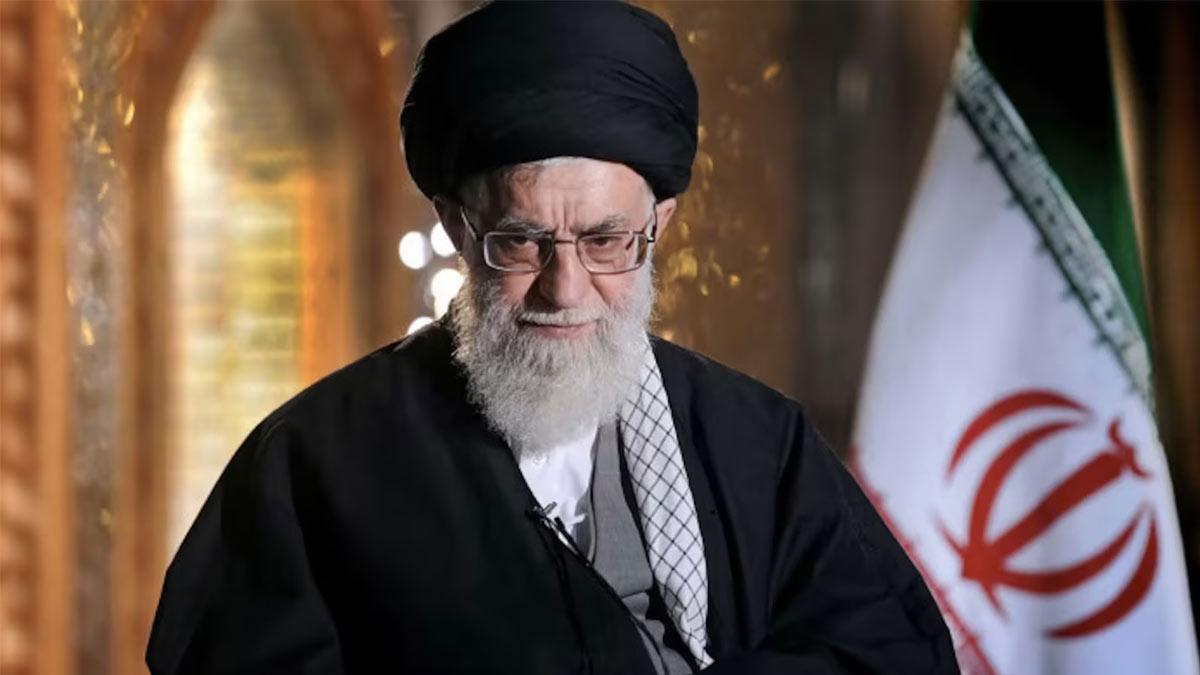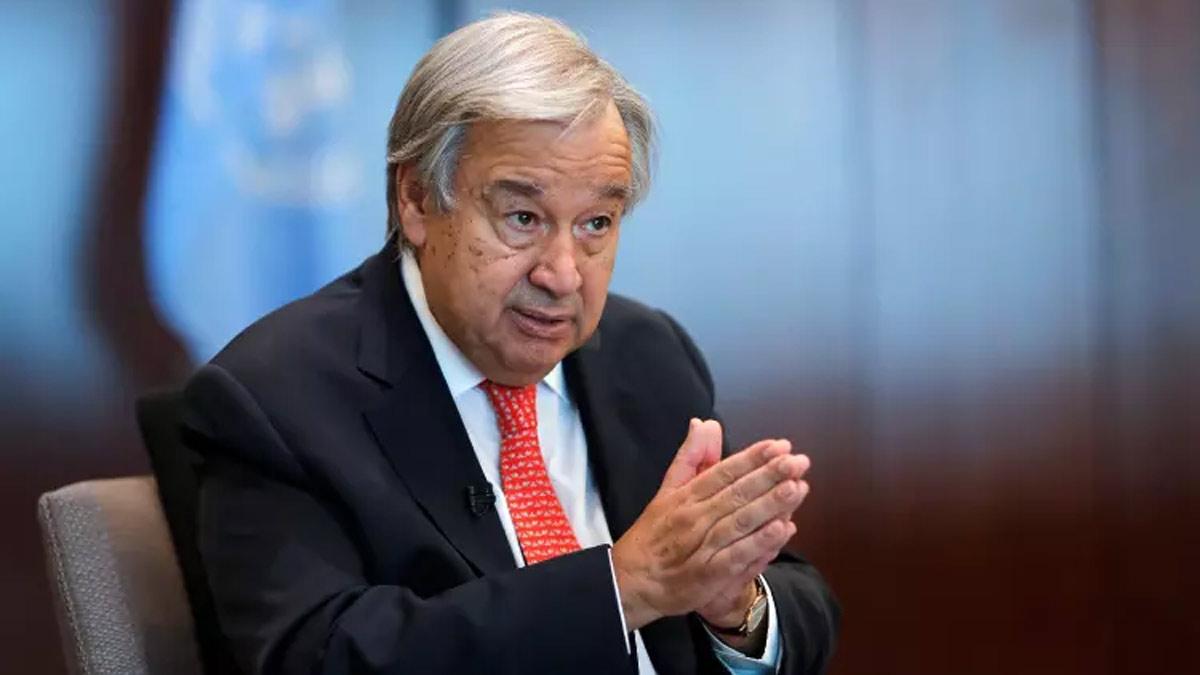In the face of global speculation on social media, the Indian government on Sunday dismissed as completely unfounded rumors that the United States used Indian airspace to attack Iran as part of Operation Midnight Hammer.
The clarification was made after US Defence Secretary Pete Hegseth asserted that a large-scale air strike on three Iranian nuclear facilities greatly eroded Tehran's nuclear program.
US Vice President J.D. Vance, meanwhile, reasserted that Washington is still willing to resolve its tensions with Iran through diplomatic means.
Issuing a rebuttal on social media platform X, India's PIB made a strong denial of the viral allegations. "There are a number of social media platforms which have reported that Indian airspace was used by the United States to launch aircrafts against Iran in Operation Midnight Hammer. This news is false. Indian airspace wasn't utilised by the United States in Operation Midnight Hammer," the PIB declared.
The post further observed that US Joint Chiefs of Staff Chair General Dan Caine had clearly described the flight route employed by the American forces in a press conference, providing a link for public use.
Earlier in a briefing at the Pentagon, Defence Secretary Hegseth stated: "We ruined the Iranian nuclear program." He added that the operation was conducted by direct direction from President Donald Trump and on the basis of strategic precision and months-long meticulous coordination.
"The order we got from our Commander-in-Chief was concentrated, it was strong, and it was unmistakable," Hegseth informed media.
He explained that the attack, dubbed Operation Midnight Hammer, focused on Iran's principal nuclear enrichment sites at Natanz, Isfahan, and Fordow.
The operation was enormous in scale—using more than 125 military jets, including B-2 stealth bombers. The attack also involved deploying 14 GBU-57 bunker-buster bombs and over 30 Tomahawk cruise missiles to disable Iran's nuclear facilities.
President Trump, in an address to the nation shortly after the bombings, dubbed the mission a stunning success. "A short time ago, the US military conducted massive precision strikes against three key nuclear facilities located within the Iranian regime. Our goal was the annihilation of Iran's nuclear enrichment capability and an end to the nuclear threat posed by the world's leading state sponsor of terror.". Tonight, today, I can tell the world that the strikes were a spectacular military success," he stated.
In spite of the military triumph, Vice President Vance indicated the US is not closing the door to diplomacy. In an interview, he stated, "We're prepared in case the Iranians do retaliate, but … if the Iranians want to expand this by attacking American soldiers, I think that would be a disastrous mistake."
Seconding that, Hegseth cautioned Iran against revenge, promising an immediate and total response if retaliated against. "This is not the last administration. President Trump said no nukes. He wants peace and Iran should walk in that direction. He unleashed a truth last night saying this. Any form of retaliation from Iran towards the United States of America will face force way larger than what was seen tonight," Hegseth stated.

